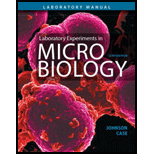
Why are tears and saliva potential biohazards?
To analyze:
Tears and saliva potential biohazards.
Introduction:
Biohazard is any substance of biological origin posing an intense threat to living beings and their health. It can be bacteria, viruses, a bio-toxin, infected body fluids medical wastes, etc.
Explanation of Solution
Body fluids like blood, saliva, semen, vaginal fluids, mucus, transport nutrients to the cells and expel wastes out of the body. Saliva that is produced by the salivary gland contains glycoproteins and minerals. It becomes a biohazard if it is infected with deadly microbes. There are many levels of biohazards amongst which Biohazard level 2 are agents that pose severe illness that gets transmitted through direct exposure to the infected fluid. For instance, Hepatitis B gets transmitted through infected blood, saliva, semen, etc.
Tears and saliva are not potentially infectious materials unless contaminated with blood or other OPIM (Other Potentially Infectious Materials) like body fluids, unfixed tissue or organ from a live or dead human, Infected cell or tissue cultures.
Hence, the body fluids with infection are major biohazards if transmitted.
Want to see more full solutions like this?
Chapter 41 Solutions
Pearson eText for Laboratory Experiments in Microbiology -- Instant Access (Pearson+)
- 2. In one of the reactions of the citric acid cycle, malate is oxidized to oxaloacetate. When this reaction is considered in isolation, a small amount of malate remains and is not oxidized. The best term to explain this is a. enthalpy b. entropy c. equilibrium d. free energy e. loss of energyarrow_forward18. The citric acid cycle takes place in a. the chloroplasts b. the cytosol c. the inner mitochondrial membrane d. between the two mitochondrial membranes e. the mitochondrial matrix 40 WILarrow_forward8. Most reactions of anaerobic respiration are similar to a. aerobic respiration b. photosynthesis c. lactic acid fermentation d. alcoholic fermentation e. both c and darrow_forward
- 12. Which of the following molecules can absorb light? a. Pigments b. Chlorophyll c. Rhodopsin d. Carotenoids e. All of the abovearrow_forwardWhich of the following proteins or protein complexes is directly required for the targeting of mitochondrial inner membrane multipass proteins, such as metabolite transporters, whose signal sequence is normally not cleaved after import? OA. TIM22 OB. TIM23 C. OXA OD. Mia40 OE SAMarrow_forwardQUESTION 9 An animal cell has been wounded and has a small rupture in its plasma membrane. Which of the following is more likely to happen next? OA. The cell rapidly cleaves by cytokinesis. OB. The rate of receptor-mediati endocytosis is increased. OC. The rate of exocytosis is increased. OD. The rate of pinocytosis is increased.arrow_forward
- For the a subunit of a trimeric G protein, A. a G-protein-coupled receptor GPCR) acts as a guanine nucleotide exchange factor (GEF), whereas a regulator of G protein signaling (RGS) can act as a GTPase-activating protein (GAP). B. a GPCR acts as a GAP, whereas an RGS can act as a GEF. C. both a GPCR and an RGS can act as a GEF. O D. both a GPCR and an RGS can act as a GAP OE. None of the above.arrow_forwardA cell expresses a transmembrane protein that is cleaved at the plasma membrane to release an extracellular fragment. The fragment binds to receptor proteins on nearby cells and activates signaling pathways resulting in altered gene expression patterns in the cells. What form of intercellular signaling does this represent? OA. Contact-dependent signaling B. Paracrine signaling OC. Synaptic signaling D. Endocrine signaling E. Autocrine signalingarrow_forwardWhich of the following drive nuclearly encoded proteins import into the mitochondrial matrix? OA. ATP hydrolysis OB. Membrane Potential OC. K+ Ions OD. A and B OE. None of the abovearrow_forward
- Which of the following statements is true regarding Cholesterol import into the cell? OA. It is transported within LDL B. Receptor mediated endocytosis is involved OC. Release of cholesterol occurs in the Lysosome D. All of the above are true statements OE. None of the above are true statementsarrow_forwardIn which of the following schematic drawings of signaling pathways does the activation of the receptor lead to gene expression? Activating and inhibitory steps are indicated with (+) and (-), respectively. OA OB ㅇㅂㅇㅂㅇㅁ (+) Gene Expression Activated Signaling proteins Transcription receptor activator Bl D Gene Expression Gene Expression ㅁㅁㅇ Gene Expression Gene Expressionarrow_forwardWhich of the following events normally activates a GTP-binding protein? OA. GTP hydrolysis by the protein OB. Activation of an upstream GTPase-activating protein OC. Activation of an upstream guanine nucleotide exchange factor OD. Phosphorylation of a bound GDP molecule by an upstream phosphorylase OE. Pi release after GTP hydrolysisarrow_forward
 Human Physiology: From Cells to Systems (MindTap ...BiologyISBN:9781285866932Author:Lauralee SherwoodPublisher:Cengage Learning
Human Physiology: From Cells to Systems (MindTap ...BiologyISBN:9781285866932Author:Lauralee SherwoodPublisher:Cengage Learning- Essentials of Pharmacology for Health ProfessionsNursingISBN:9781305441620Author:WOODROWPublisher:CengageLifetime Physical Fitness & WellnessHealth & NutritionISBN:9781337677509Author:HOEGERPublisher:Cengage





